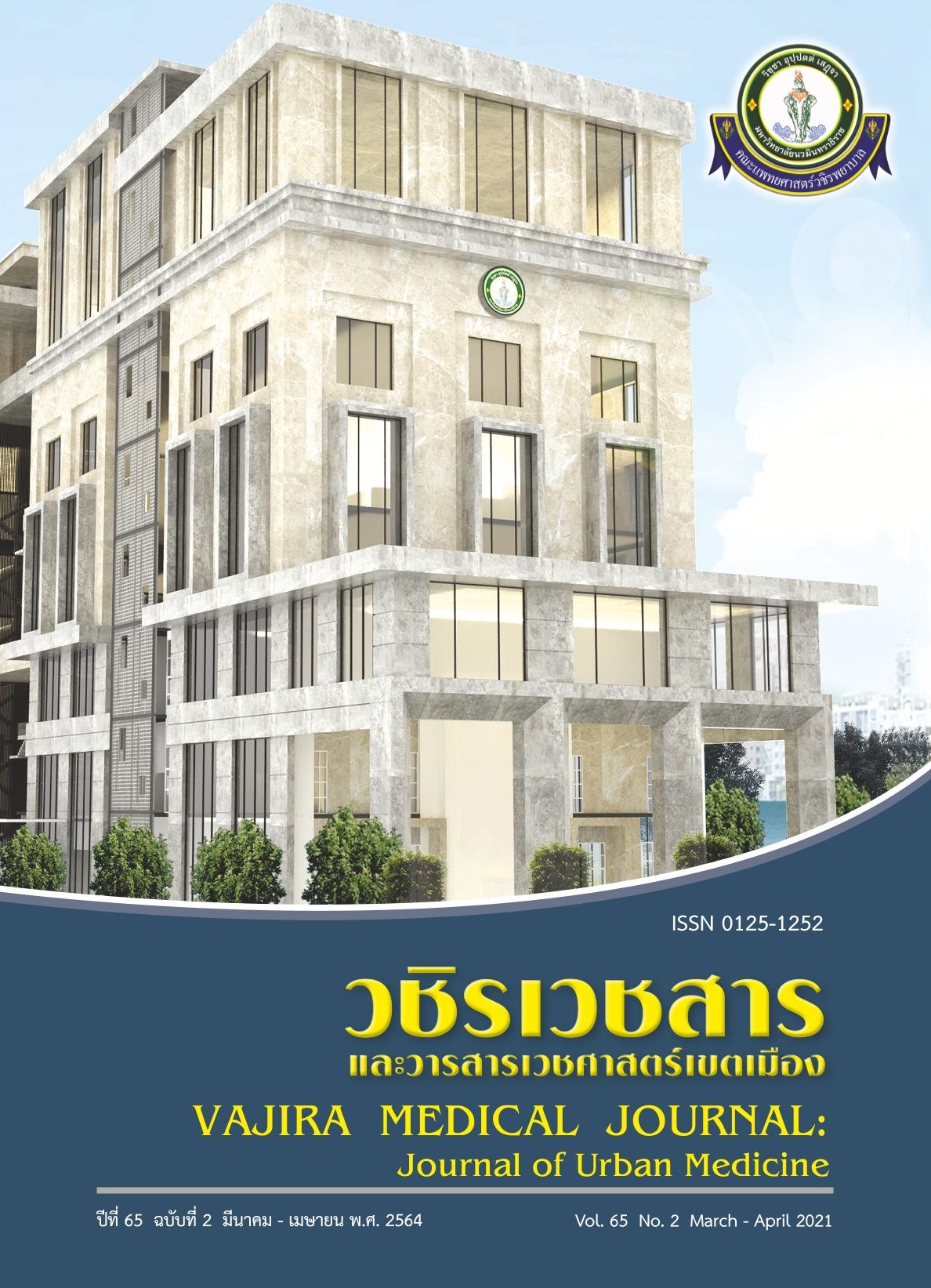Glycopyrrolate to Prevent Spinal Anesthesia Induced Hypotension in Pregnant-Women Who Underwent Cesarean Section: Randomized Controlled Trial
Main Article Content
Abstract
Objective: A primary outcome was to compare an incidence of hypotension following an administration of glycopyrrolate versus a placebo before commencing a spinal anesthesia in pregnant-women. Simultaneously, a bradycardia prevention, an amount of ephedrine and atropine-resuscitated drugs, nausea-vomiting and dry lips of pregnant women and an APGAR score of neonates were secondary outcomes.
Method: This study was a double blinded randomized controlled trial in a 18-40 years of pregnant-women, who underwent the spinal anesthesia for an elective cesarean section during April 2018 to July 2019. Ninety-eight participants were randomized into two groups. The pregnant women were received the intravenous glycopyrrolate or normal saline before the spinal anesthesia. Blood pressure and heart rate were recorded in every 2 minutes for 10 minutes and following by every 5 minutes until 30 minutes after the spinal anesthesia. Furthermore, the severity of nausea-vomiting, dry lips of pregnant women and APGAR scores of neonates were recorded.
Results: The incidence of hypotension within 30 minutes after the spinal anesthesia in the glycopyrrolate group was significantly lower than the placebo group by 25 percent (IRR = 0.75) (p-value=0.032, 95%CI: 0.57 to 0.98). In addition, reduction of using ephedrine was significantly found in the glycopyrrolate group compared to the placebo group.
Conclusion: The intravenous glycopyrrolate could prevent the spinal anesthesia-induced hypotension in the pregnant-women who underwent the cesarean section, which was clinical useful in the future.
Downloads
Article Details
References
Hirnforschung. Anticholinergic. Anesthesia Related Drugs [Internet]. 2010 [cited 2018 Jan 15];363:1-2. Available from:http://hirnforschung.kyb.mpg.de/fileadmin/uploads/files/Methoden/Bet%C3%A4ubungsverfahren_und_Chirurgie/SOP_DrugDescriptions.pdf
Ljubicic Sr, Nizic Z, Vukovic A, Car N. Cesarean section under spinal anesthesia in General Hospital of Dubrovnik. Periodicum Biologorum 2013; 115: 257-60.
Carpenter RL, Caplan RA, Brown DL, Stephenson C, Wu R. Incidence and risk factors for side effects of spinal anesthesia. Anesthesiology 1992; 76: 906-16.
Arndt JO, Bomer W, Krauth J, Marquardt B. Incidence and time course of cardiovascular side effects during spinal anesthesia after prophylactic administration of intravenous fluids or vasoconstrictors. Anesth Analg 1998; 87: 347-54.
Montoya BH, Oliveros CI, Moreno DA. Managing hypotension induced by spinal anesthesia for caesarean section. Rev Col Anest 2009; 37: 131-40.
Tarkkila P. Complications of Regional Anesthesia. 2nd ed. Alberta: Springer Media; 2007.
Critchley LA, Stuart JC, Conway F, Short TG. Hypotension during subarachnoid anaesthesia: haemodynamic effects of ephedrine. Br J Anaesth 1995; 74: 373-8.
Patel SD, Habib AS, Phillips S, Carvalho B, Sultan P. The Effect of Glycopyrrolate on the Incidence of Hypotension and Vasopressor Requirement During spinal Anesthesia for Cesarean Delivery: A Meta-Analysis. Anesth Analg 2018; 126(2):552-8.


